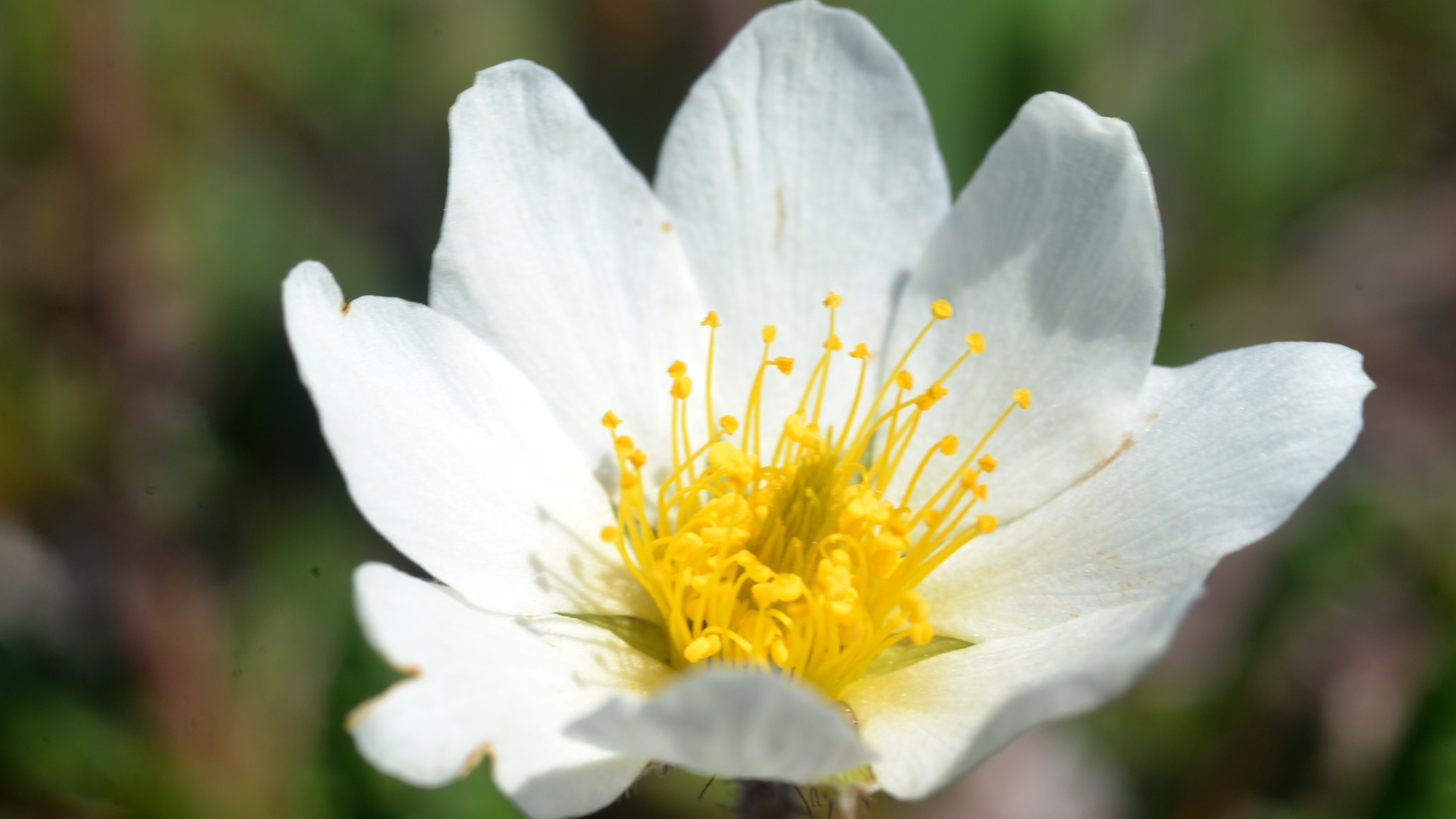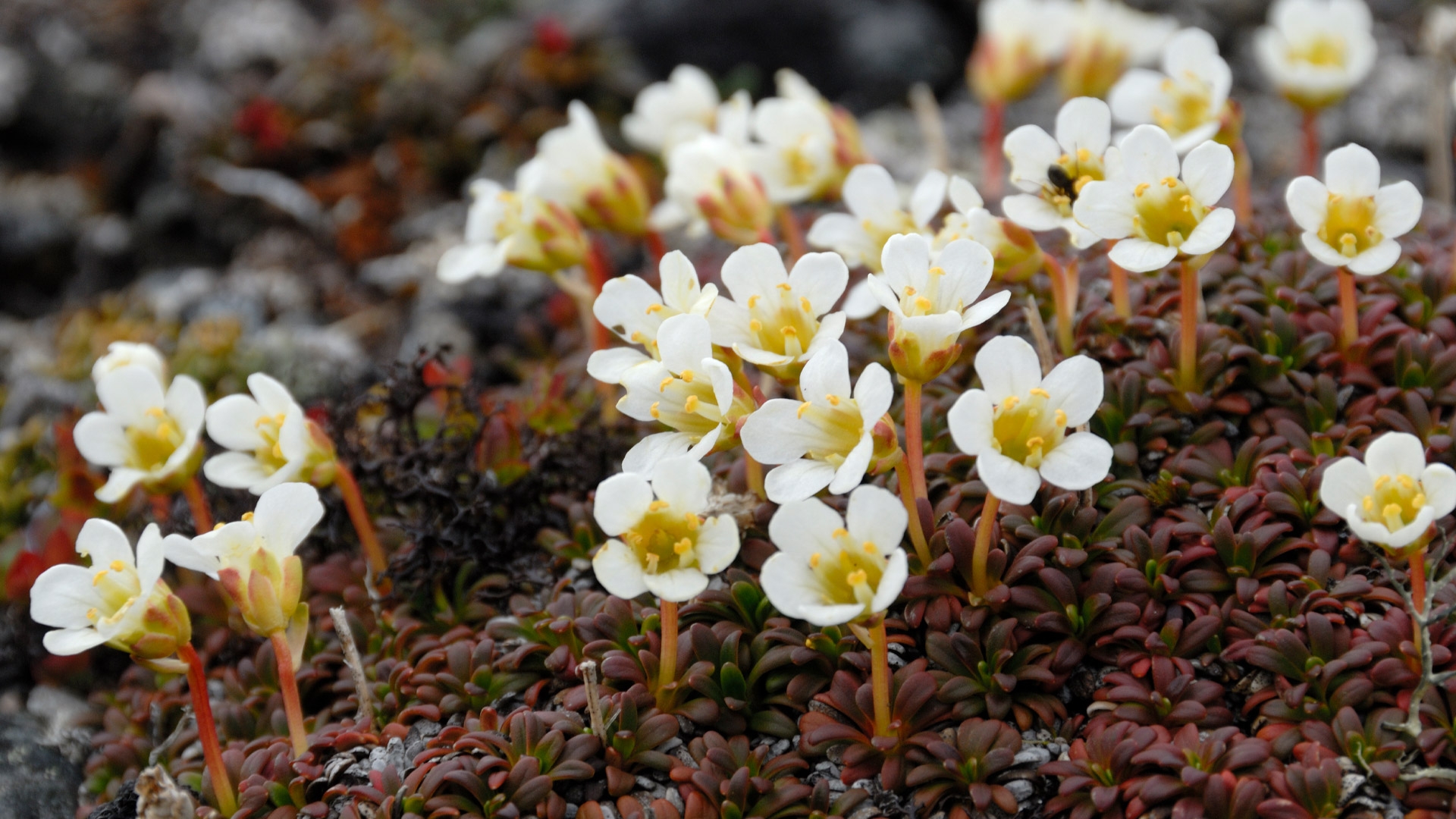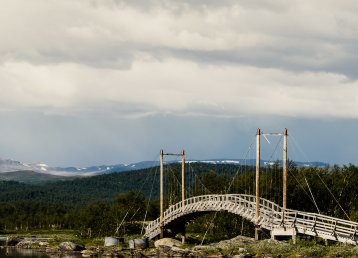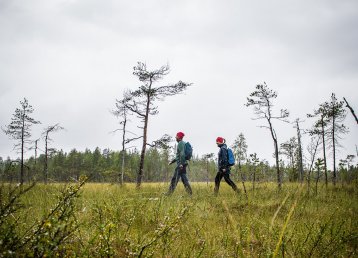Swedish author Sten Selander writes in his book “The Swedish Landscape”: “When you walk up a mountainside during summer, you wander back through the year”. A very accurate description of how you in the valley can experience full summer, and as you walk to a mountain peak, you get to experience the spring change into a snow-covered landscape.
The variations in vegetation and climate
The mountain vegetation can be organised in three different areas which follow one another according to altitude: mountain pine forest, mountain birch forest and mountain tundra. In the low altitude areas – vegetation is more vibrant than in the high altitude areas.
The mountains are a rough and exposed environment for any organic life. An essential factor for the mountain flora is the altitude and how far north the growth place is. The proximity to the ocean, or other large masses of water, has a lot of impact on the climate in the mountains as it has in other locations. Areas with bedrock particularly rich in lime are especially favourable and have a more significant richness in vegetation. The climate of the mountain areas is consistently very stable. There are no sudden changes, and the plants have been able to develop over time into a considerable variation.
Also read
Stories told with namesThe growth period in the northern part of the mountain range is quite short, in the lower altitude areas of the mountain tundra from the end of mid-June to the beginning of September. In the areas above 1000 masl, the growth period spans from the beginning of July to mid-August – for only five weeks. But it’s not just the altitude that affects the summer climate in the mountains, but the duration of the snow cover also has a high impact. When the winter is rich in snow and the spring cold – the plants get a shorter growth period. Many of the mountain plants are usually smaller in size, and, commonly, they create alternative growth patterns like bows, carpets and tussocks to protect themselves from wind and frost. They have other features like, for example, hirsuteness to limit evaporation and commonly a very strongly developed root system.
Here follows a few common, and less common, mountain plants you can stumble upon in the mountains, in Swedish Lapland.
Mountain avens (Dryas octopetala)
Mountain avens is a low-growing bush that creates a carpet reaching about one decimeter above ground. The leaves look like tiny oak leaves but are leather-like in texture, wintergreen and hairy on the bottom. It blossoms in June-July with large white flowers growing one by one. The flower usually has eight petals. Mountain avens is characterised by the tiny oak-like leaves, the large flowers and the hairy infructescence, and it can hardly be confused with other plants.
Mountain avens is common in the high altitude mountain areas. It prefers ground rich in lime and has named the vegetation type: dryas moor*, which also is the home to many of the rare mountain plants. Mountain avens was one of the first plants to immigrate to Sweden after the ice age.
*In grounds rich in lime in the mountains you can find the so-called dryas moor, which has been named after the dominance of Mountains avens (Dryas octopetala) growing as carpets. Dryas moors are rich in species and foster several of the more unusual mountain plants.
Alpine gentian (Gentiana nivalis)
Alpine gentian is a low-growing annual or biennial herb. The leaves are bluntly egg-shaped and are placed opposite each other on the stem. It blooms in July-August with beautiful bright blue flowers that only burst out fully in sunny weather. The petals are joined together with five stripes in a darker shade. Even though it’s eye-catching when it’s in full bloom, it’s easy to miss when the flowers are closed. Alpine gentian is commonly found on grounds rich in lime in the mountains, it grows on dryas moors, in grass fields and rock ledges. It is quite common, and can sometimes also be found in the woodlands below the mountains.
Moss campion (Silene acaulis)
Moss campion is a perennial, wintergreen, tightly tufted herb. The stems are only a few centimetres long. The leaves look like bodkins, hardly even a centimetre long, light green with short hairs on the edges. Moss campion blooms in July-August and the flowers grow one by one on short stems, almost submerged into the tussocks. The petals have a small cut on edge and are pink (and rarely white). The species is usually a dioecious plant, meaning that there are both male and female plants. Over time, moss campion creates large, low-growing tussocks rich in blooming which give them a characteristic appearance. It is a plant common throughout the mountain range, even though it prefers grounds rich in lime.
Lapland rosebay (Rhododendron lapponicum)
Lapland rosebay is a low-growing bush with elliptically shaped leaves and reddish-violet flowers. It is wintergreen and only reaches about a decimeter above ground at the most, but more commonly four to five centimetres. The branches are jagged and gnarled with smooth greyish bark. The plant blooms in June, with the flowers growing a few together on short reddish stems. It grows on dryas moors where the ground is rich in lime. It is rarer in the most northern parts of the mountain range.
Glacier buttercup (Ranunculus glacialis)
Glacier buttercup is a perennial, low-growing, up to two decimeters high, bare and slightly meaty herb with white flowers. The stems and the leaves are reddish. The leaves are deeply lobate. The blooming period is July-August, with large single-growing flowers, sometimes a few growing together. The petals are wide, white at first, then shifting to pink and finally dirtily brownish-red. Glacier buttercup grows closely to lasting patches of snow and other sparsely vegetated, moist areas on high altitude.
Diapensia lapponica
Diapensia lapponica is a wintergreen low-growing, roughly tufted herb or pillow-like bush that reaches a couple of centimetres high. The leaves are thinly egg-shaped, hard and slightly bent with shiny dark green or even reddish-brown colour. The blooming period is June-July, the flowers are around a centimetre wide with white, blunt petals. Diapensia lapponica grows on the mountain moors on dry, open, stony ground.
Purple mountain saxifrage (Saxifraga oppositifolia)
Purple mountain saxifrage is a perennial, crawling, wintergreen herb which forms tussocks or pillows. The lying stems have tightly growing leaves opposite each other in a cross-pattern. The leaves are small and triangular with hairy edges. The purple mountain saxifrage begins blooming very early in the spring, often straight after the snow melts away and continues to bloom well into summer. The flowers are reddish-purple and large in comparison to the plant. It grows commonly in moist soil in cracks and next to patches of snow all through the mountain range.
Alpine butterwort (Pinguicula alpina)
Alpine butterwort is a low-growing herb with leaves at the bottom of the stem in a bow with white flowers growing alone on the decimeter high almost bare stem. The leaves are at least two centimetres long, often brownish-green with the edges slightly rolled inwards. The plant is, like others in the family, a carnivorous and the top of the leaves are covered with glands that produce mucus that makes insects and other small animals stick to them.
Alpine butterwort blooms in June-July. The white zygomorphic flowers have a short yellow-green spur and are composed of a two-lobed upper lip and three-lobed lower with yellow spots. It is most common in the most northern parts of the mountains where it grows in wet grounds rich in lime. Interesting enough it can also be found on the island Gotland in southern Sweden which is naturally rich in lime.































